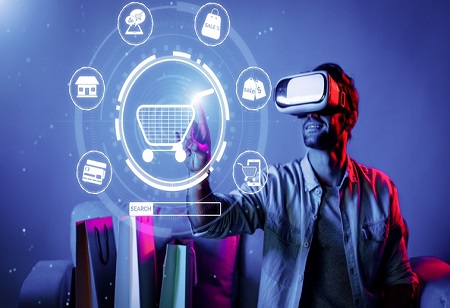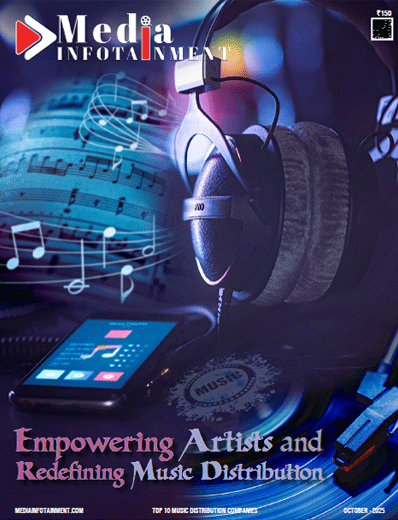How AR and VR Are Shaping the Future of Marketing
For a brand to stabilize itself in a fast paced market and changing needs of customers, it becomes essential for it to tap into new marketing tools. What a brand can do in such a situation is to look into new technology resources and utilize them for greater reach and access. One such technology at present, which is catching the attention of the audience, is augmented reality (AR) and virtual reality (VR). While the AR facilitates the integration of the virtual elements into the real world, VR facilitates one to enjoy a virtual environment. Hence, both are known for their distinctive functions.
This growth of AR/VR has changed the experience of the user, making the brand select AR and VR as the go-to option for marketing. By the year 2028, the AR/VR markets are expected to have 6,887 million global users, reaching a market volume of 58.1 billion USD and shaping the future of marketing. Therefore, it becomes important for the brand to do marketing with immersive technology in the fast-paced market evolution. This article highlights how these brands are living in future by utilizing AR and VR in their marketing campaign:
Enhancing Customer Experience
Brands have been using AR and VR technologies to increase the customer experience, offering them the real-time experience. This breaks the barrier between the customer and the product, increasing the customer engagement.
One of the best examples is Volvo, a Swedish multinational company known for its car manufacturing, has been utilizing the AR and VR technology in an effective way. The Volvo Cars AR application allows its users to select their choice of car models and view them in their desired space. This application also allows the user to check out the interior of the car before approaching the showroom. With the Volvo Reality App, the company offers the customers the ability to view 3D car renders of the interiors, enjoy the driving experience across different landscapes, and provide memorable experiences to the customers. Volvo made sure that the customers were gaining real experience by breaking the barrier of reality, enabling brand engagement.
Increases Brand Engagement
AR/VR helps the brand to connect to customers. With the utilization of this technology, customers can experience products and services, thus increasing the interaction with the brand.
GlaxoSmithKline (GSK) is a British multinational pharmaceutical and Biotechnology Company set a new benchmark of utilizing the AR and VR technology in the field of Pharmaceutical. Through their AR technology, GSK allows their customers to scan medicine packages, providing a 3D visualization of the contents. The brand also focuses on providing educational information related to products in an interactive format, leading to transparency. In 2016, GSK, with their ‘Migraine Experience Simulator,’ tried to educate customers on migraine medical conditions and medicines that can be used for them by creating a VR experience for them. This action of the brand has helped the customers to have a better understanding of the medicines, leading to engagement with the product.
Enabling Brand Loyalty
With AR/VR, brands can easily incorporate their goals and values into their digital presence. With more authentic and memorable experiences created for the customers, the brand appears more engaging and relatable. This can increase the loyalty of the customers towards the brand.
One of the Red Bull marketing campaigns attempted a unique take on marketing its brand with the ‘Win with Ninja’ campaign. They launched an AR campaign with gamer Tyler Belvin, known as ‘Ninja.’ This collaboration created an innovative experience for the customers to take part in the campaign. Customers used to access this campaign with a single click on the Red Bull website and used to invite Ninja to their homes, take pictures with him, and finally win the opportunity to play games with Ninja at Lollapalooza in Chicago. The interactive avatar of Ninja, with user-friendly components and instant accessibility without the usage of any sort of application, widened the reach of the brand. With brand image being represented by Ninja, the customers felt more relatable to the brand, increasing the brand loyalty.
Easier Promotion
AR/VR facilitates the marketing of a wide range of products in a short period of time. This enables the brand to tailor-make the experience for the customers, leveraging the product qualities.
The Indian eyewear company Lenskart utilized the AR technology to promote its products. The brand virtually enabled the users to try on the spectacles through their phone. This promotion utilized the technology of AR to provide 3D rendering of the specs, enabling the user to check out the product from multiple angles. This played as a prominent tool in the Indian market, as this was the first company to provide the experience of before-purchasing in eyewear products. Similarly, The New York Times partnered with Google to provide low-cost VR devices for their customers. ‘The New York Times’ digital app enabled the users to virtually experience certain stories in a simulated environment. This marketing move attracted the young generation of readers to the brand.
Conclusion
These brands have understood the role of technology in fostering relationships with customers. With their understanding of the technological drive among their customers, these brands have opted to offer something new and exciting for their customers to engage with. Augmented reality and virtual reality can be the future of marketing technology, as they can immerse a diverse range of audience into a brand, earning brand loyalty, audience engagement, and wider reach with easier promotion.
🍪 Do you like Cookies?
We use cookies to ensure you get the best experience on our website. Read more...






